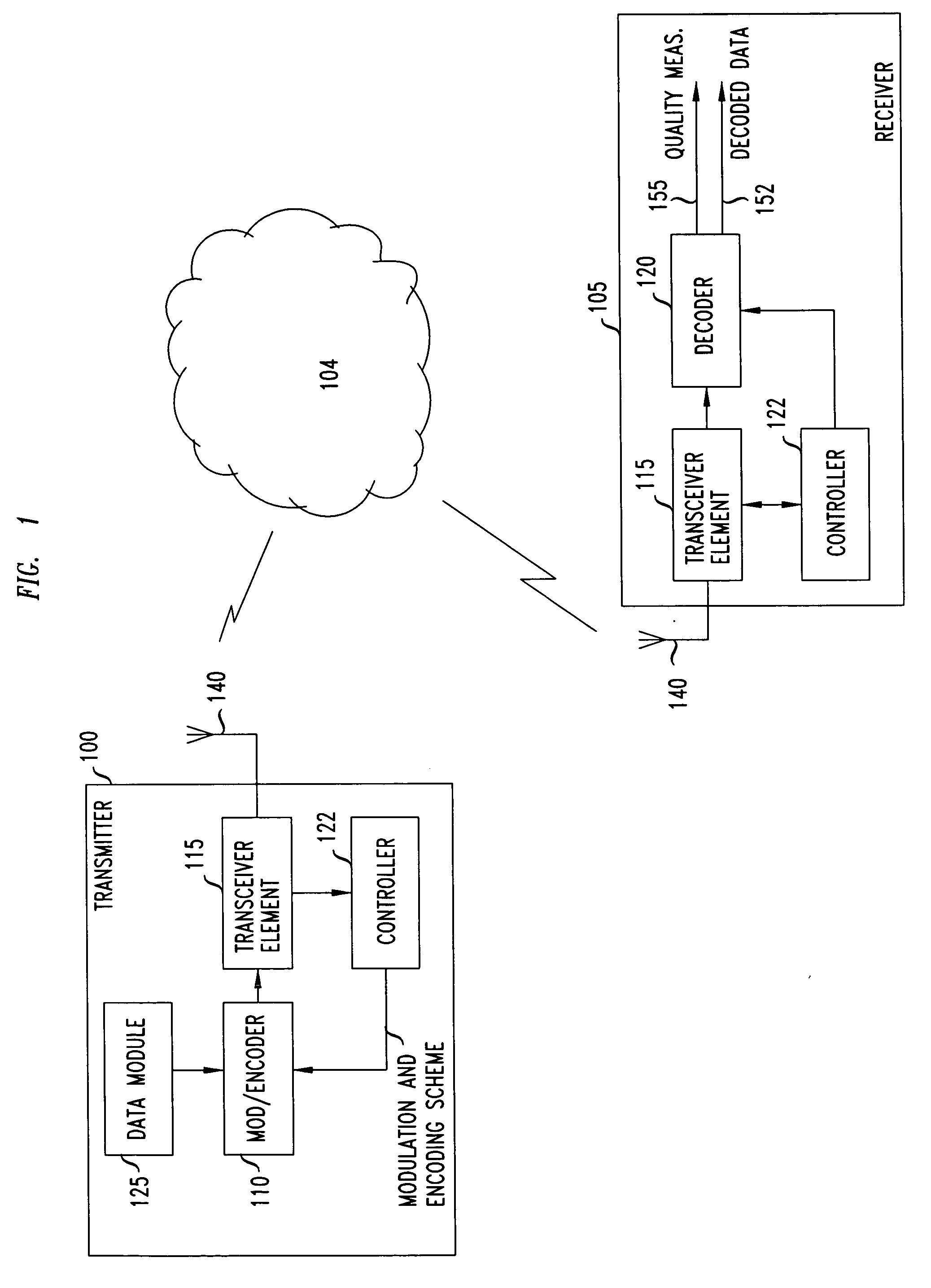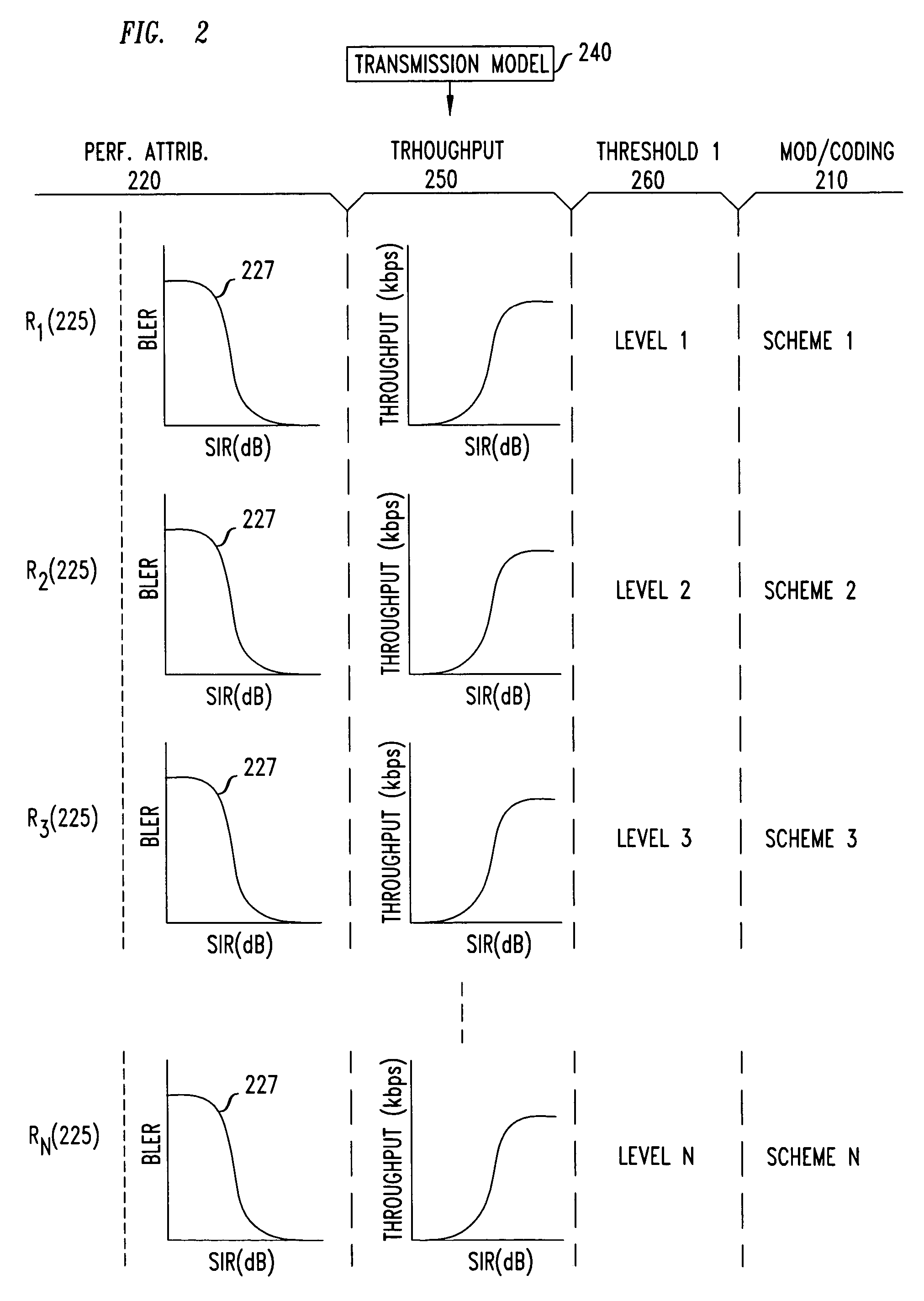Link adaptation in wireless networks for throughput maximization under retransmissions
a wireless network and link technology, applied in the field of link adaptation, can solve the problems of only low data rate, prolonged resource occupancy, and overall system performance suffer, and achieve the effects of maximizing throughput, preventing system instability and misallocation of bandwidth, and efficiently allocating bandwidth resources
- Summary
- Abstract
- Description
- Claims
- Application Information
AI Technical Summary
Benefits of technology
Problems solved by technology
Method used
Image
Examples
Embodiment Construction
The present invention is based upon an analysis of link adaptation within a retransmission environment. The present invention departs significantly from traditional link adaptation schemes for wireless data services, which neglect retransmissions and ultimately produce an erroneous link adaptation framework that produces instability, misallocation of bandwidth and poor system performance.
The retransmission model underlying the present invention generated two critical discoveries that significantly shaped the present invention. First, the threshold values for a link adaptation system using a retransmission model can be derived from the no-retransmission model thresholds. The retransmission thresholds are obtained by shifting the throughput characteristic curves for the no-retransmission model by an amount relating to the difference between the signal to interference ratio generated by the base offered traffic, SIR0, and the resulting signal-to-interference ratio generated due to t...
PUM
 Login to View More
Login to View More Abstract
Description
Claims
Application Information
 Login to View More
Login to View More - R&D
- Intellectual Property
- Life Sciences
- Materials
- Tech Scout
- Unparalleled Data Quality
- Higher Quality Content
- 60% Fewer Hallucinations
Browse by: Latest US Patents, China's latest patents, Technical Efficacy Thesaurus, Application Domain, Technology Topic, Popular Technical Reports.
© 2025 PatSnap. All rights reserved.Legal|Privacy policy|Modern Slavery Act Transparency Statement|Sitemap|About US| Contact US: help@patsnap.com



